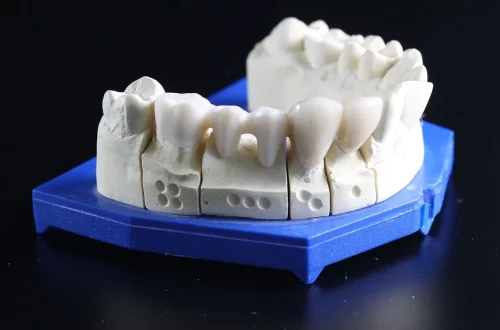
Choosing the Right Betta Tank Size for a Happy and Healthy Fish
Creating the perfect environment for a Betta fish is essential for ensuring their happiness and well-being. These vibrant creatures, known for their striking colors and unique personalities, require specific care to thrive. The size of their tank plays a critical role in their overall health and behavior. Unlike some fish that can adapt to various sizes, Bettas are sensitive to their surroundings. A tank that is too small can lead to stress, poor water quality, and various health issues, while a tank that is too large may not provide the necessary security and comfort that these fish need.
Water quality, temperature, and space to swim are paramount for Bettas, and each of these factors is influenced by the size of the tank. It’s important to understand that a larger tank generally allows for more stable water conditions and can accommodate additional equipment for filtration and heating. However, the right size also depends on the individual Betta’s personality and behavior. Some Bettas may thrive in a community setting, while others prefer solitude. Therefore, selecting the right tank size is not just about meeting the basic needs of the fish but also about creating a habitat where they can express their natural behaviors.
With this understanding, let’s delve deeper into the various aspects of Betta tank sizes, ensuring that your aquatic friend has everything they need for a happy and healthy life.
Understanding Betta Fish Behavior
Betta fish, also known as Siamese fighting fish, are known for their territorial nature and vibrant colors. Understanding their behavior is crucial when choosing the right tank size. Bettas are solitary creatures by nature, often preferring to establish their own space rather than share it with others. This territoriality can lead to aggressive behavior, especially in smaller tanks where they feel confined.
In a smaller tank, a Betta may feel stressed due to the lack of space to swim and explore. This stress can manifest in various ways, such as lethargy, reduced appetite, or even aggressive behavior directed at its own reflection or other fish. The recommended minimum tank size for a Betta is 5 gallons. This size allows for better water quality management and provides ample space for the fish to swim and engage in natural behaviors.
In contrast, larger tanks can offer a more stable environment. They can accommodate additional filtration and heating systems, which are essential for maintaining water quality. With more space, Bettas can also display their natural hunting and swimming behaviors, which can enhance their quality of life. However, it is important to note that even in larger tanks, the Betta’s territorial nature should be considered if you plan to add tank mates.
Creating a suitable environment means providing hiding spots and plants, which can help reduce stress. When Bettas feel secure, they are more likely to exhibit vibrant colors and active behaviors. Therefore, understanding a Betta’s behavior is not just about choosing a tank size; it’s about crafting an environment that fosters their natural instincts.
The Importance of Water Quality in Tank Size
Water quality is a crucial factor in the health of any aquarium, and it becomes increasingly important as tank size increases. In smaller tanks, water quality can deteriorate rapidly because pollutants and waste can build up quickly. This is particularly concerning for Betta fish, which are sensitive to changes in water conditions. A larger tank allows for a greater volume of water, which can dilute toxins and provide a more stable environment.
In a 5-gallon tank, for example, the larger water volume means that ammonia and nitrates produced by fish waste and uneaten food will not spike as quickly as they would in a smaller tank. This stability is essential for the health of Bettas, as poor water quality can lead to diseases such as fin rot or ich, which can compromise their well-being.
Moreover, larger tanks provide more options for filtration systems. A good filter can significantly improve water quality by removing harmful substances and promoting beneficial bacteria that break down waste. Additionally, heaters can be more effective in larger tanks, maintaining a stable temperature that is crucial for the health of tropical fish like Bettas.
Regular water changes are still necessary regardless of tank size, but the frequency may be reduced in larger tanks. For instance, in a 10-gallon tank, you might only need to change 20-30% of the water weekly, while in a smaller tank, a 50% change might be necessary to maintain adequate water quality.
In summary, tank size directly impacts water quality, which in turn affects the health of your Betta fish. A larger tank not only offers a more stable environment but also simplifies the maintenance of water quality, making it a better option for both novice and experienced aquarists.
Choosing the Right Tank Size for Your Betta
When it comes to selecting the right tank size for your Betta, several factors should be considered. The most commonly recommended sizes for Bettas are 5 to 10 gallons. A 5-gallon tank serves as a minimum threshold, providing enough space for swimming and adequate water quality management. However, if space allows, a 10-gallon tank or larger can offer even more benefits.
One of the primary considerations is the Betta’s personality. Some Bettas are more aggressive and territorial than others. If you have a particularly feisty Betta, a larger tank may help to reduce aggression by providing ample space to establish territory and avoid confrontations with tank mates. Moreover, larger tanks allow for the addition of plants and decorations that can create hiding spots, further reducing stress.
Another aspect to consider is the type of filtration and heating system you plan to use. Larger tanks can accommodate more efficient filtration systems that help maintain water quality, which is vital for the health of your Betta. Additionally, having a heater that can maintain a stable temperature is crucial, as Bettas thrive in warmer waters.
It is also essential to think about future plans. If you might want to add tank mates in the future, starting with a larger tank can save you the hassle of upgrading later. Community tanks can be a great option for Bettas if done correctly, but this requires careful selection of compatible species and enough space for all inhabitants.
Ultimately, the right tank size will depend on your Betta’s personality, your maintenance routine, and your future plans for the aquarium. A 5-gallon tank is a good starting point, but a larger tank can provide a more enriching environment for your Betta fish.
Setting Up Your Betta’s Tank
Once you’ve decided on the appropriate tank size, setting up your Betta’s habitat becomes the next crucial step. A well-planned setup will not only enhance the aesthetic appeal of your aquarium but also ensure your Betta’s health and happiness.
Start by choosing a suitable substrate. Many Betta owners prefer fine gravel or sand, as these materials are gentle on their delicate fins. It’s essential to rinse the substrate thoroughly before placing it in the tank to remove any dust or contaminants.
Next, consider adding plants and decorations. Bettas love to explore and hide, so including live or silk plants can create a more natural environment. Live plants also help maintain water quality by absorbing nitrates. When selecting decorations, ensure there are no sharp edges that could harm your Betta’s fins. Smooth, rounded ornaments are ideal.
Water parameters, including temperature and pH, should be monitored closely. Bettas thrive in water temperatures between 76-82°F and prefer a slightly acidic to neutral pH level (6.5-7.5). Investing in a good heater and thermometer will help maintain these conditions.
Lastly, establish a regular maintenance routine, including water changes and filter cleaning. Regular upkeep will ensure that your Betta remains healthy and happy in its environment.
In conclusion, setting up your Betta’s tank involves careful planning and consideration. By providing a well-designed habitat, you can create an environment that allows your Betta to thrive and exhibit its natural behaviors.
—
This article is for informational purposes only and should not be considered medical advice. Always consult a qualified healthcare provider for any health-related concerns.




